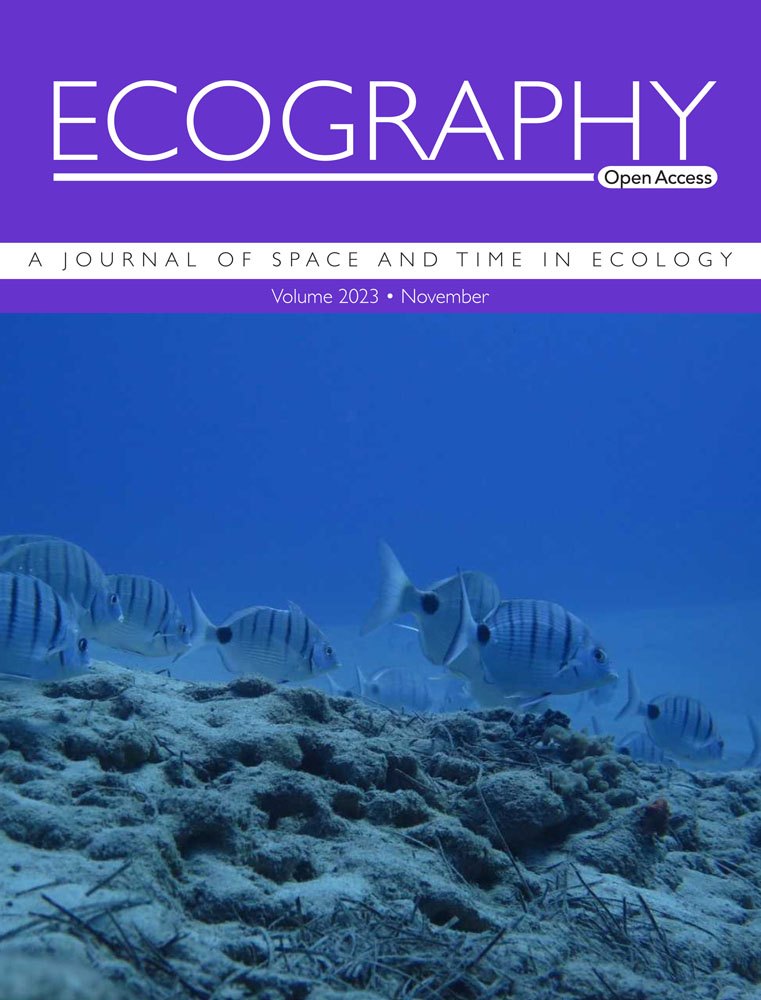Global phylogenetic and functional structure of rodent assemblages
IF 5.4
1区 环境科学与生态学
Q1 BIODIVERSITY CONSERVATION
引用次数: 0
Abstract
Exploring the global patterns of phylogenetic and functional structure of assemblages is key to describe the distribution of biodiversity on Earth and to predict how communities and ecosystem functioning may be affected by anthropogenic pressures. Rodent communities have been studied in this regard in the past, but previous work largely focused on desert ecosystems. Here, we leveraged a large database of rodent range maps, functional traits, and phylogenetic trees to compute several metrics of functional and phylogenetic structure across > 10 000 rodent assemblages spanning all terrestrial biomes. We found that the vast majority of assemblages did not significantly differ from random association among species. Importantly, we show that the current patterns we observed can locally differ from past community structure, revealing the role humans have played in altering large‐scale biodiversity patterns. We also showed a strong scale‐dependence of our metrics and revealed a weak correlation between phylogenetic and functional structure, providing an additional line of evidence that they do not reflect the same processes of community assembly.啮齿类动物群落的全球系统发育和功能结构
探索组合的系统发育和功能结构的全球模式是描述地球上生物多样性分布和预测群落和生态系统功能如何受到人为压力影响的关键。啮齿动物群落在过去已经在这方面进行了研究,但以前的工作主要集中在沙漠生态系统上。在这里,我们利用一个大型的啮齿类动物范围图、功能特征和系统发育树数据库来计算跨>;10000种啮齿类动物,分布于所有陆地生物群系。我们发现绝大多数的组合与种间的随机关联没有显著差异。重要的是,我们表明,我们观察到的当前模式可能在局部不同于过去的群落结构,揭示了人类在改变大规模生物多样性模式方面所起的作用。我们还展示了我们的指标具有很强的规模依赖性,并揭示了系统发育和功能结构之间的弱相关性,这为它们不反映相同的群落组装过程提供了额外的证据。
本文章由计算机程序翻译,如有差异,请以英文原文为准。
求助全文
约1分钟内获得全文
求助全文
来源期刊

Ecography
环境科学-生态学
CiteScore
11.60
自引率
3.40%
发文量
122
审稿时长
8-16 weeks
期刊介绍:
ECOGRAPHY publishes exciting, novel, and important articles that significantly advance understanding of ecological or biodiversity patterns in space or time. Papers focusing on conservation or restoration are welcomed, provided they are anchored in ecological theory and convey a general message that goes beyond a single case study. We encourage papers that seek advancing the field through the development and testing of theory or methodology, or by proposing new tools for analysis or interpretation of ecological phenomena. Manuscripts are expected to address general principles in ecology, though they may do so using a specific model system if they adequately frame the problem relative to a generalized ecological question or problem.
Purely descriptive papers are considered only if breaking new ground and/or describing patterns seldom explored. Studies focused on a single species or single location are generally discouraged unless they make a significant contribution to advancing general theory or understanding of biodiversity patterns and processes. Manuscripts merely confirming or marginally extending results of previous work are unlikely to be considered in Ecography.
Papers are judged by virtue of their originality, appeal to general interest, and their contribution to new developments in studies of spatial and temporal ecological patterns. There are no biases with regard to taxon, biome, or biogeographical area.
 求助内容:
求助内容: 应助结果提醒方式:
应助结果提醒方式:


